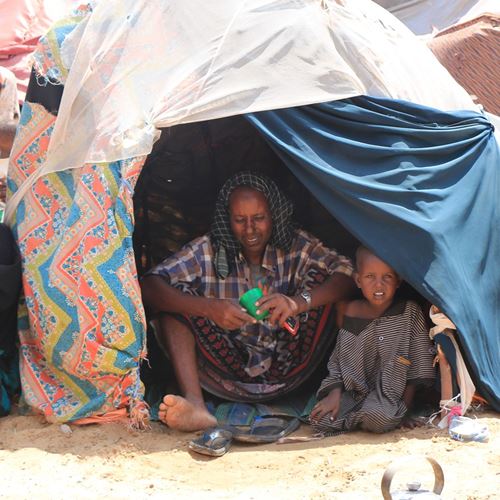News
Famine expected to hit already fragile areas of Somalia
Four back-to-back failed rainy seasons have led to an unprecedented drought which, compounded by the effects of conflict, abnormally high food prices, COVID-19 and two desert locust infestations, have pushed people into extreme hunger.

Famine is projected to occur in three areas of Bay Region, Somalia, in late 2022 if additional integrated humanitarian assistance is not delivered. The famine prediction by the Integrated Food Security Phase Classification (IPC) comes after months of acute food insecurity affecting 7.1 million people throughout the country, including the hard-to-reach areas. At least 213,00 people face extreme food shortages and malnutrition and are at risk of dying from hunger. The situation is deteriorating rapidly and immediate attention is needed to avoid reliving the 2011 famine, where 260,000 people lost their lives.
Somalia regularly faces extreme climate events including drought and flooding. Famine, on the other hand, is not common and is directly linked to the increased frequency, severity and overlapping of climate shocks in the past 10 years, which have left communities with little time to recover.
“Drought is not new to the region, and the humanitarian and development community has been implementing successful resilience programming for over ten years in order to ensure that agro-pastoralist communities are self-sufficient. But as the country is entering its fifth failed rainy season, the drought is now the worst since records began and communities coping mechanisms have been pushed past the breaking point”, said James Curtis, DRC’s Executive Director in East Africa and Great Lakes region.
More than just hunger
Famine, just like drought, is not a one-off event fixed with a surge of humanitarian assistance. Its ripple effect can affect community structures, health and peace and security for a generation.
Displacement is one of the most immediate consequences as communities take desperate measures to survive. 1 million people have been displaced internally in Somalia in search of food, pasture and water, and nearly 20,000 have crossed the border into Ethiopia and Kenya – although both countries also face severe drought. Mass displacement can, in turn, trigger conflict over meagre food and water resources.
Mass displacement and food insecurity break down family and community structures, which significantly increases protection risks for women and children. Without community protection, they are at risk of gender-based violence (GBV), sexual exploitation and abuse, but also forced and child marriage.
The impact of famine, if declared, will be felt over an entire generation, as children are deprived of education and could sustain lifelong cognitive and physical impairments from acute malnutrition.
The situation is critical and deteriorating rapidly – millions of lives are at stake. Life-saving assistance must be delivered to people in need, including in hard-to-reach areas.
“The famine projection makes it more important than ever to ensure that funding is allocated to organisations with a strong operational field presence and the ability to scale up fast to reach the most in need, including in the hard-to-reach areas”, said Audrey Crawford, DRC Somalia Country Director.
